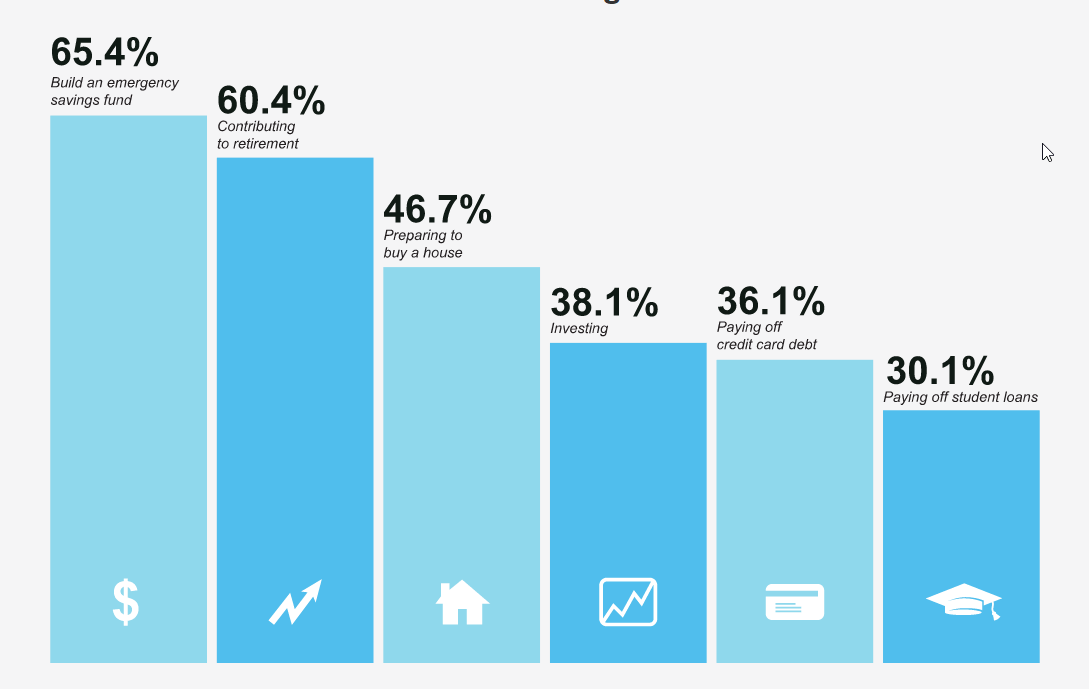Three Simple Ways for Parents to Save for College

If you’re going into the 9-5 world, which the vast majority of people are, getting a college degree is essentially a must if you want to risk up the ranks past an entry level position. And graduate degrees are becoming more and more common these days as well.
Many professionals are obtaining graduate degrees to further separate themselves from the competition and continue to increase their income.
If you’re heading in that direction, or even if you have young children who you would like to send to college, the earlier you get started, the better your position will be on day 1. Even though these strategies are mostly focused on parents with children, they can be adapted to helping save for a graduate school education as well.
Today, I’ve got Amy Johnson, a financial blogger who specializes in creating sensible savings plans for those entering the higher education realm.
Take it away Amy
—
Saving for college should start early. According to Matt Krantz, a financial market reporter for USA Today, starting early is the best way for parents to meet the requirements of college tuition costs and to prevent their kids from drowning in debt after earning their college degrees.
“First, some staggering numbers to put all this into perspective,” he says. “If you think you can wait and do nothing, and just pay for college out of your paycheck when the time comes, you might want to start asking for a raise now.”
The numbers don’t lie. If you are an in-state resident at a public university, you’d be spending around $33,300 according to savingforcollege.com. This cost is not final, though, as it can increase with inflation. That $33,300 cost today, could increase to $95,000 in 18 years based on 6% annual inflation. So you had better not be planning on too much long-term debt for your education.
The good news is, if you plan well, you don’t have to go into debt.
You can start saving now. If you really want to save money to invest in a college education, you need to start early. For example, most people nowadays attend at least four years starting at age 18 at an estimated cost of $10,000 per year. Forecasting a return investment of 7% a year with college costs rising at 6% a year, means you need to save a minimum of $241 each month to save enough for college tuition costs.
However as time goes on, you need to save a little more. Using the same information as above, if you wait a few years, you’ll need to save $322 a month, and if you wait a few more, saving for college all of the sudden becomes a $563 a month endeavor.
Saving for College 101
Once you have determined how much you need to save for college, you next need to decide the best way to go about actually saving and investing the money. Here are a couple of ideas.
529 College Savings Plan
These plans allow investments in a college savings account with a child as beneficiary. 529 Plans are operated by either a state or an educational institution. They are low maintenance accounts, designed to help families set aside funds for future college costs at qualified colleges around the nation.
It’s up to each state to decide if they are going to offer a 529 plan and the plans can vary from state to state. Just about every state has a minimum of one 529 plan, and what most people don’t know is, you can invest in a plan offered by any state. You don’t have to live in the state, or plan to attend college in that state either. It would be wise to compare the features and benefits of each before deciding in which to invest.
Federal tax law provides awesome tax benefits to the plan participant. While contributions are not deductible, the investment growth is tax deferred, meaning that you don’t pay taxes on the profits until the money is withdrawn. However, as long as the money is being used to pay for the college costs of the beneficiary, these withdrawals are tax free, which is extremely nice.
Some states offer tax breaks, as well. For instance, they may offer an upfront deduction for your contributions or an income exemption when funds are withdrawn for college costs. Check with your state to determine how they handle 529 plans.
Another benefit of these plans is that the parent maintains full control of the account. There are a few exceptions, but the beneficiary of the account has no right to the funds. In most plans, parents can even reclaim the funds for themselves, at any time, with no questions asked.
Keep in mind that if the withdrawal is non-qualified, it will be subject to income tax and penalties. These plans are also flexible in that you can change to a different option every year or rollover the account to a different state’s program. You can change the beneficiary to another qualifying family member, as well.
Best of all, everyone is eligible for a 529 plan and you can save a hefty amount–in many state plans, the amount you can save is over $300,000. There are, generally, no income or age restrictions with 529 plans.
Coverdell Education Savings Account
Set up by the U.S. government, these tax-deferred accounts allow parents to invest a maximum of $2,000 a year per child under age 18. They work similarly to a Roth IRA in that you make non-deductible contributions to the account. The account will grow tax free, and withdrawals are not taxed either, provided they are used for qualified educational expenses.
The best thing about this type of account is that it is not just applicable to saving for college–parents can also use it for elementary and secondary education, as well. You do lose some control of the account, however. The contributions will eventually be distributed to your child even if they don’t use the money for college and it must be fully withdrawn by the time he or she reaches age 30, otherwise taxes and penalties will be levied
Roth IRA
When you use a Roth IRA account when saving for college, this offers many advantages. For instance, when you withdraw your contributions using the Roth IRA early on, you won’t be penalized or taxed. An important advantage is that, since this is technically a retirement account, it doesn’t count against the student for financial aid purposes.
You can also have enough money in the account for retirement, while withdrawing the principal to pay for college expenses. If a child refuses to go to college, has other plans, or has enough money to pay for college expenses, parents can simply keep the money in the Roth IRA account without having to open another savings account.
Saving for College Early On
The bottom line is, the sooner saving for college can be started, the better. With just a few dollars here and there, a sensible parent can end up paying for most, if not all of their child’s education with these strategies.

Amy Johnson is an active finance blogger who is fond of sharing interesting financial management tips to encourage people to manage their personal finances. More specifically, she advocates that people should check their credit reports and scores on a regular basis to always keep their finances in control.





